
Hexen: Beyond Heretic is a fantasy first-person shooter video game developed by Raven Software and published by id Software distributed through GT Interactive on October 30, 1995. It is the indirect sequel to 1994's Heretic, and the second game in Raven Software's "Serpent Riders" trilogy, which culminated with Hexen II. The title comes from the German noun Hexen, which means "witches", and/or the verb hexen, which means "to cast a spell". Game producer John Romero stated that a third, unreleased game in this series was to be called Hecatomb.

Hexen II is a dark fantasy first-person shooter (FPS) video game developed by Raven Software and published by id Software in 1997. It is the third game in the Hexen/Heretic series, and the last in the Serpent Riders trilogy. Using a modified Quake engine, it features single-player and multiplayer game modes, as well as four character classes to choose from, each with different abilities. These include the "offensive" Paladin, the "defensive" Crusader, the spell-casting Necromancer, and the stealthy Assassin.

Quake is a first-person shooter game developed by id Software and published by GT Interactive. The first game in the Quake series, it was originally released for MS-DOS, Microsoft Windows, and Linux in 1996, followed by Mac OS and Sega Saturn in 1997 and Nintendo 64 in 1998. In the game, players must find their way through various maze-like, medieval environments while battling monsters using an array of weaponry. Quake takes inspiration from gothic fiction and the works of H. P. Lovecraft.

Myth is a series of real-time tactics video games for Microsoft Windows and Mac OS. There are three main games in the series: Myth: The Fallen Lords (1997), Myth II: Soulblighter (1998), and Myth III: The Wolf Age (2001). The Fallen Lords was developed by Bungie, and published by Bungie in North America and Eidos Interactive in Europe. Soulblighter was also developed by Bungie, and was published by Bungie in North America and GT Interactive in Europe. The Wolf Age was developed by MumboJumbo, and co-published by Take-Two Interactive and Gathering of Developers for Windows and by Take-Two and MacSoft for Mac.

SimCity 2000 is a city-building simulation video game jointly developed by Will Wright and Fred Haslam of Maxis. It is the successor to SimCity Classic and was released for Apple Macintosh and MS-DOS personal computers in 1993, after which it was released on many other platforms over the following years, such as the Sega Saturn and SNES game consoles in 1995 and the PlayStation in 1996.
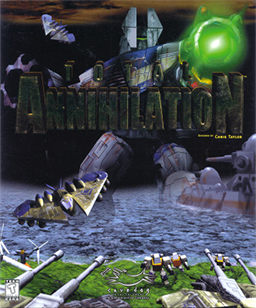
Total Annihilation is a science fiction real-time strategy video game released in September 1997 for Microsoft Windows and Mac OS by Cavedog Entertainment and distributed internationally by GT Interactive. Two expansion packs were released in 1998, The Core Contingency on April 29 and Battle Tactics on July 20, while a medieval-themed spin-off called Total Annihilation: Kingdoms was released on June 25, 1999.
Relic Entertainment Inc. is a Canadian video game developer based in Vancouver, founded in 1997. The studio specializes in real-time strategy games and is known for series such as Homeworld, Warhammer 40,000: Dawn of War and Company of Heroes. Acquired by THQ in 2004, the company was sold to Sega on January 22, 2013 as part of THQ's bankruptcy and operated under its European division. By May 2024, Relic had secured a partnership with an external investment group, allowing it to split from Sega and operate independently.

Sonic R is a 1997 racing game developed by Traveller's Tales and Sonic Team and published by Sega for the Sega Saturn. It is the third racing game in the Sonic the Hedgehog series, and the first to feature 3D computer graphics. The player races one of ten Sonic characters in various Sonic-themed race tracks as they attempt to stop Doctor Robotnik from stealing the Chaos Emeralds and enslaving the world. Sonic R features single-player and multiplayer game modes, and while similar to kart racing games such as Mario Kart, it places an emphasis on jumping and exploration. By collecting items and completing objectives, players can unlock secret characters.

The Bitmap Brothers are a British video game developer founded in 1987. The company entered the video game industry in 1988 with the scrolling shooter Xenon. They quickly followed with Speedball. Prior to becoming the publisher of their own games, early Bitmap Brothers titles were distributed by Image Works and Konami.

Magic Carpet is a 3D flying video game developed by Bullfrog Productions and published by Electronic Arts in 1994 for MS-DOS, PlayStation, and Sega Saturn platforms. Its graphics and gameplay were considered innovative and technically impressive at the time of its release.
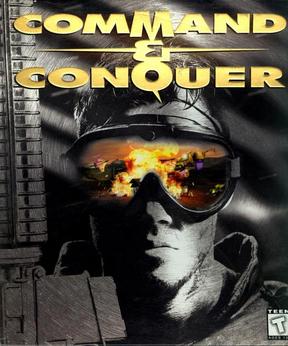
Command & Conquer is a real-time strategy video game developed and published by Westwood Studios in 1995. Set in an alternate history, the game tells the story of a world war between two globalized factions: the Global Defense Initiative of the United Nations and a cult-like militant organization called the Brotherhood of Nod, led by the mysterious Kane. The groups compete for control of Tiberium, a mysterious substance that slowly spreads across the world.
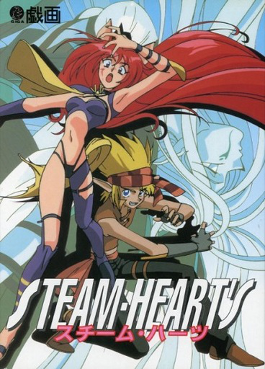
Steam-Heart's is a vertically scrolling shooter and eroge developed by Giga and published by TGL. The story follows two siblings as they fight off a virus that is possessing the people in their world. The game features shooter gameplay paired with ample erotic cutscenes with scantily clad women. Steam-Heart's was initially released on PC-98 personal computers in 1994. It was released for the PC Engine Super CD-ROM² System in 1996 and then the Sega Saturn in 1998. All releases have been limited to the Japanese market. Critics generally found the gameplay to be average, with the erotic content being the sole distinguishing feature.

The Need for Speed is a 1994 racing game developed by EA Canada, originally known as Pioneer Productions, and published by Electronic Arts for 3DO in 1994. It allows driving eight licensed sports cars in three point-to-point tracks either with or without a computer opponent. Checkpoints, traffic vehicles, and police pursuits appear in the races.
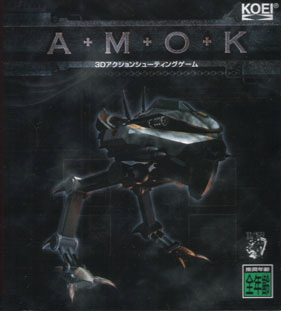
Amok is a 1996 mech-themed action video game for Windows and Sega Saturn. Players guide a robot called "Slambird" through nine different scenarios to complete several objectives. The game was noted for its use of voxel-based graphics for its environments rather than the polygonal models which were standard at the time of its release. Developed by Lemon, Amok began as a technology demo for the Sega 32X, but was reworked for the Saturn after Sega discontinued support for the 32X.

Master of Monsters is a turn-based strategy game developed by SystemSoft for the MSX and NEC PC8801. It was ported to a variety of consoles and PCs including the PC Engine CD, NEC PC9801, and Sega Genesis/Mega Drive. While it never had the same success as its SystemSoft stablemate Daisenryaku, the game garnered a loyal following. Its success in the North American market on the Sega Genesis proved sufficient for a sequel on the Sega Saturn, and an anime art-style enhanced Sony PlayStation version titled Disciples of Gaia with a Japanese role-playing game feel. Master of Monsters: Disciples of Gaia was released in 1998.

Z: Steel Soldiers is a real-time strategy game released by the Bitmap Brothers in 2001 for the Windows platform and later by Kavcom Limited and KISS for Android and iOS in 2015. It is the sequel of their earlier game Z, and follows the same futuristic military science fiction storyline and battlefield gameplay. The graphics are enhanced from 2D to 3D.

Lost Vikings 2 is a 1997 puzzle-platform game developed by Beam Software and published by Interplay. All versions of the game, except the SNES release, were titled Lost Vikings 2: Norse by Norsewest. The sequel to The Lost Vikings, it features the original three characters plus two new playable characters: Fang the werewolf and Scorch the dragon. The gameplay remains largely the same, though the three Viking characters all have new or modified abilities.
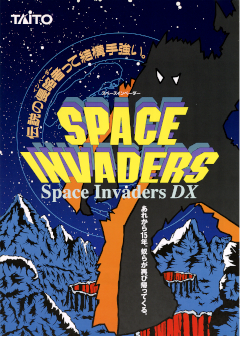
Space Invaders DX is a 1993 fixed shooter arcade game developed and published in Japan by Taito. It has been re-released for several consoles since, including the Super Nintendo Entertainment System, PC Engine Super CD, and Sega Saturn — several of these conversions use the name Space Invaders: The Original Game. The player assumes control of a laser base that must fend off waves of incoming enemies, who march down in formation towards the bottom of the screen. It is the fifth entry in the long-running Space Invaders series. DX contains four variations of the original Space Invaders, in addition to a multiplayer mode and a "Parody Mode" that replaces the characters with those from other Taito franchises. Home ports of DX received mixed reviews for their high price point and general lack of content.

Warcraft II: Tides of Darkness is a fantasy real-time strategy computer game developed by Blizzard Entertainment and released for MS-DOS and Microsoft Windows in 1995 and Mac OS in 1996 by Blizzard's parent, Davidson & Associates. A sequel to Warcraft: Orcs & Humans, the game was met with positive reviews and won most of the major PC gaming awards in 1996. In 1996, Blizzard released an expansion pack, Warcraft II: Beyond the Dark Portal, for DOS and Mac OS, and a compilation, Warcraft II: The Dark Saga, for the PlayStation and Sega Saturn. The Battle.net edition, released in 1999, included Warcraft II: Beyond the Dark Portal, provided Blizzard's online gaming service, and replaced the MS-DOS version with a Windows one.
Company of Heroes is a real-time strategy video game series developed by Relic Entertainment. The series is set during World War II.



















